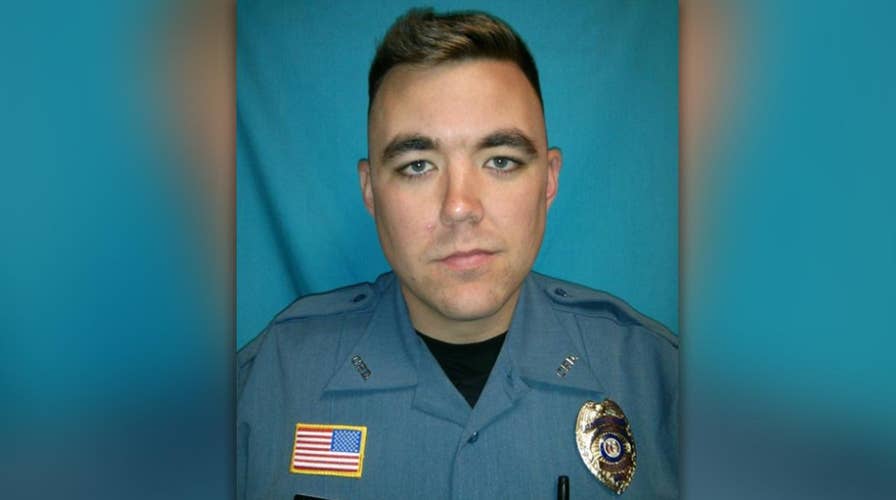One officer killed in a shooting in Missouri
Police identify 30-year-old Christopher Ryan Morton as the victim.
Police Officer Christopher Morton and two other officers were dispatched to the wrong address March 6 to respond to a disturbance call in tiny Clinton, Missouri. When the three entered the home, a man inside shot them all. Morton was killed and the two other officers were wounded.
Just three days later, Pomona, California, Police Officer Greggory Casillas attempted to stop a car for reckless driving. The driver crashed and fled into a nearby apartment. When Casillas and a second officer attempted to contact those in the apartment, they were struck by shots fired through the door. Casillas, who was only 25 and who had served in uniform for just six months, lost his life.
Morton and Casillas became the 14th and 15th police officers killed in the line of duty by fatal gunfire this year. Their deaths helped drive the almost 130 percent rise in police fatalities by gunfire so far this year.
What’s behind the increase in killings of police?
The man charged in the death of Casillas was reported to have suffered depression. The man accused of killing Morton – James E. Waters – had a well-documented history of felonious activity that put him in and out of prison for decades.
These two killings of police over 1,000 miles apart show the risk to the public and the police when people with mental illness and convicted felons have ready access to firearms.
A broader look at these tragic deaths reveals more of what police encounter hundreds of times in America every day.
Collectively, the accused killers of police in 2018 had police contacts, arrests and convictions for offenses big and small. They ranged from minor traffic violations to domestic violence, unlawful drug and weapons possession, and robbery. One man was believed to have just murdered his ex-wife.
The deputies and police officers whose names will be carved into the stone walls of the National Law Enforcement Officers Memorial in Washington were, in many of the deadly cases, not alone in being violently attacked. On multiple occasions this year, news has broken of several law enforcement officers shot – often seriously but not fatally – by a single attacker.
It seems counterintuitive that an armed attacker would resist arrest or use a firearm against several officers. Logic suggests that a rational person would understand that multiple officers will be more successful than a single officer in arresting or stopping him by force if necessary.
But logic isn’t always a meaningful factor when dealing with someone who is enraged from a fractured relationship, under the influence of drugs, determined not to go to jail or prison under any circumstances, or mentally ill. And sometimes, attackers have a toxic combination of these factors.
The incidents that brought police into contact with their killers vary. They include “hang-up” 911 calls, pursuit of suspects, domestic violence calls and other seemingly routine investigation.
Therein lies the danger.
So often, many times a day, police are engaging in “routine” responses. They often know only what a dispatcher conveys. That can be the barest information – there was a 911 hang-up, there was screaming in the background, there’s a suspicious person.
Police then arrive and face the unknown. And then the frantic activity begins when they’re engaged by hostile gunfire through a closed door or a darkened window.
The “DNA” of a cop killer isn’t always readily detectable before police arrive; it’s too seldom clear enough to warn police to respond with a SWAT team and an armored truck instead of a single patrol officer with a handgun.
Meanwhile, as law enforcement officers and their families periodically recoil in horror at another senseless killing of one of their own, we do know some things about the officers killed in the line of duty this year.
The officers who lost their lives protecting their communities included military veterans who served their nation in overseas battles; officers decorated for keeping streets in their cities and towns safe; and sons, husbands and brothers.
And they were fathers who, so far this year, left behind 25 children – 26 if you count the son of Georgia Police Officer Chase Maddox, born four days after his father was killed.
These officers were heroes – when duty called, they answered. One last time.


